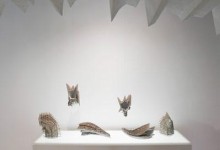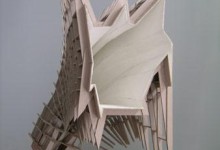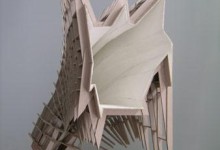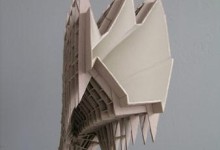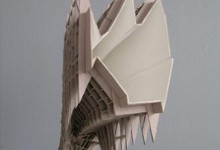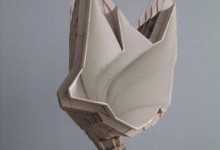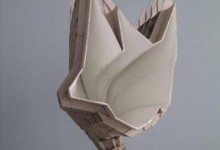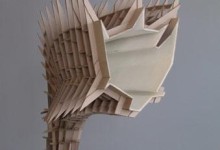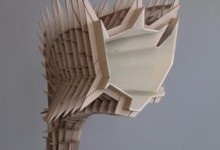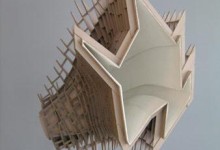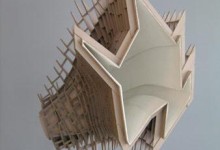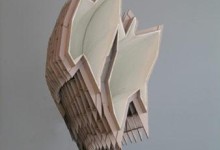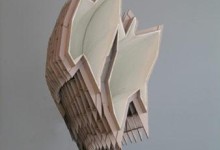Flavio Trevisan : Accumulations
Text by Erin Silver
Flavio Trevisan’s Logic series (2005) confounds notions of architectural grandeur, as well as permanence, in its presen-tation of six small-scale sculptures that are reminiscent of architectural maquettes. While the opening of each sculpture gives the illusion of a microcosmic labyrinthine corridor made never-ending by unpredictable twists and turns, the interiors of these structures become an afterthought to their intricate exteriors. Using illustration board and drywall compound to construct his elaborate sculptures, Trevisan is both artist and architect, his work both concept and construction. Describing the creation of the surfaces of his sculptures as “a time-consuming process that involves the gradual accumulation of planes,” he points to how these planes can be read as complex installations that not only mimic the pristine angularity and impenetrable robustness of the cityscape but also expose and examine the scaffolding that is typically hidden from view.
Placed on the floor or on light tables, Trevisan’s sculptures might function as architectural models of future building projects, but Trevisan’s method strays from that employed in building construction, recalling the Constructivist emphasis on both material and spatial presence. “Unlike the construction of a building where the final result is methodically predetermined, the approach taken here is the opposite, where the final form and space is merely the accumulation of progress over time.”
Rather than conceiving a building’s exterior as a smooth encasement of a smoother interior, Trevisan’s interiors are dependent on their shells. Like Tatlin’s spiraling tower,Trevisan’s layering process, at once conceived by the artist, takes on a life of its own as it carves out unique elliptical tunnels that invite the viewer to peer inside and to confront the limitations of these tangible and tactile spaces.
Are the boundaries of these spaces as limited as they initially seem to appear ? Trevisan writes, “Viewing the outside of the structure everything is revealed—the fabrication, the support and the depth of the field.” In Trevisan’s cityscape, buildings become transient, transportable objects that welcome various spatial configurations and prompt refreshing conceptions of architectural rootedness and reverence. Like fantastical portable holes slapped onto walls, Trevisan’s sculptures act as thresholds between universes, portals through which the ephemeral and vulnerable nature of space might be explored.


